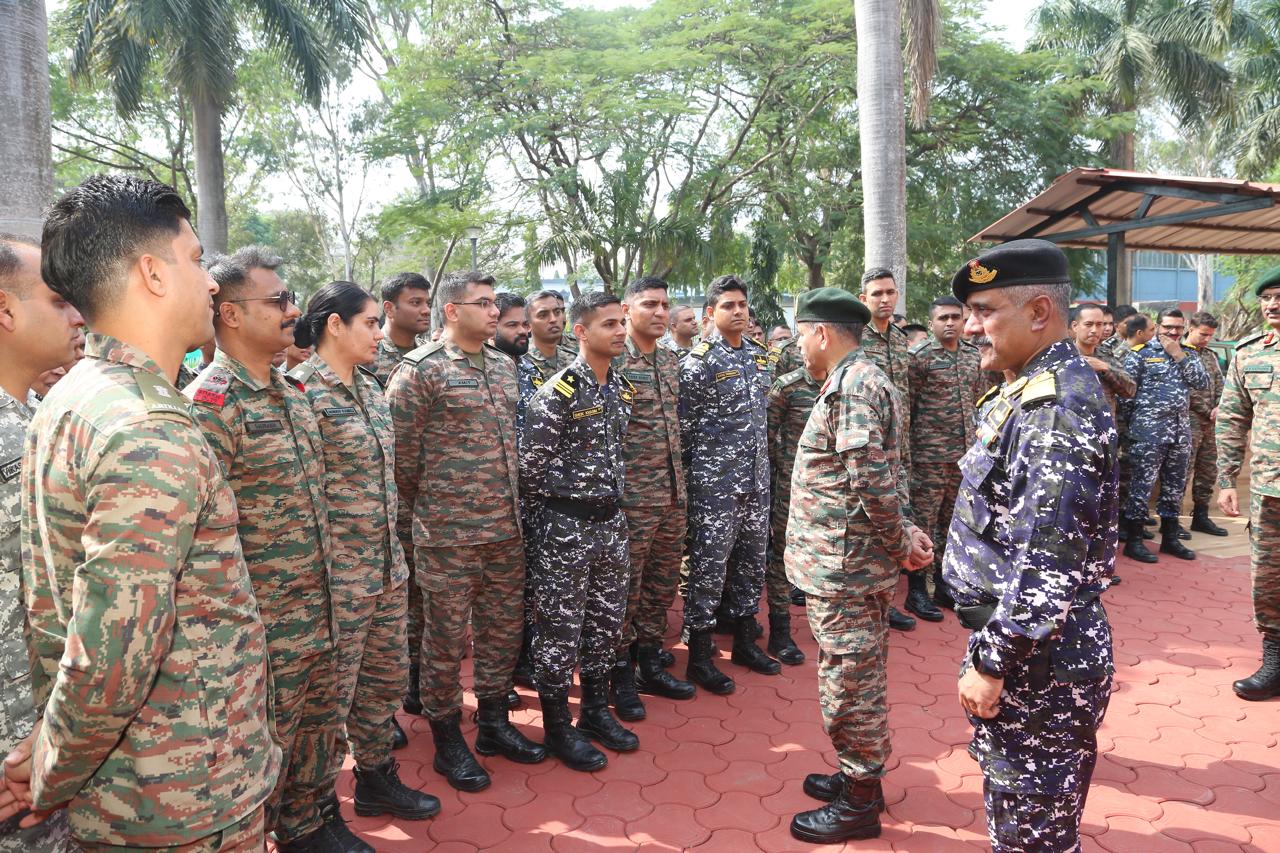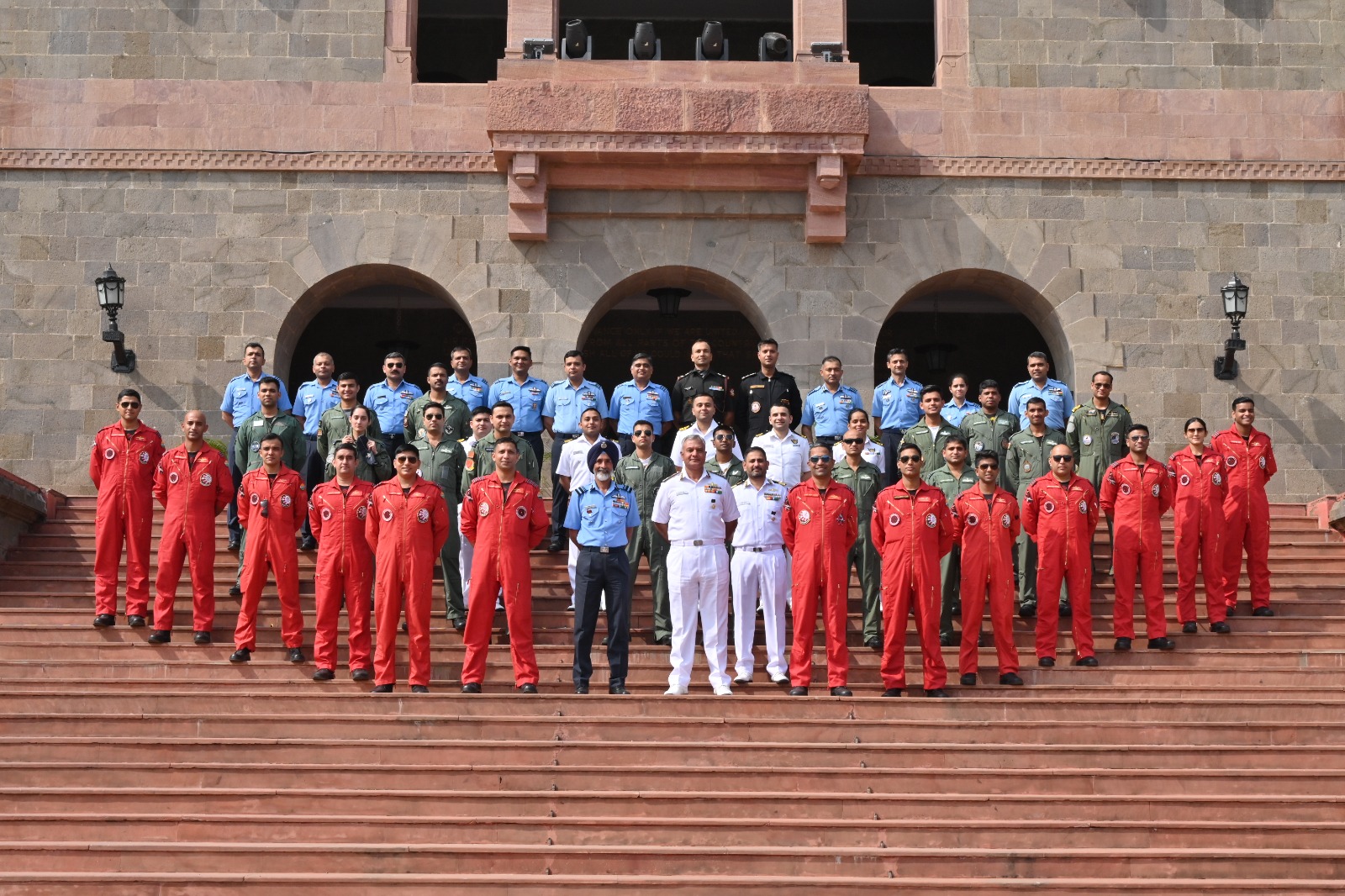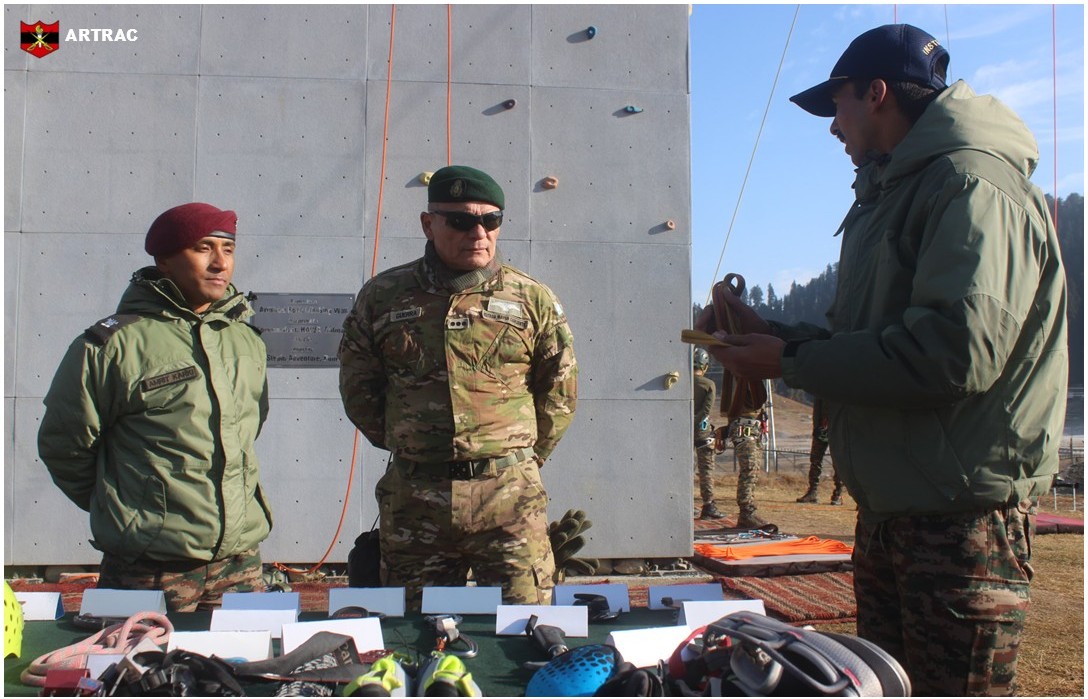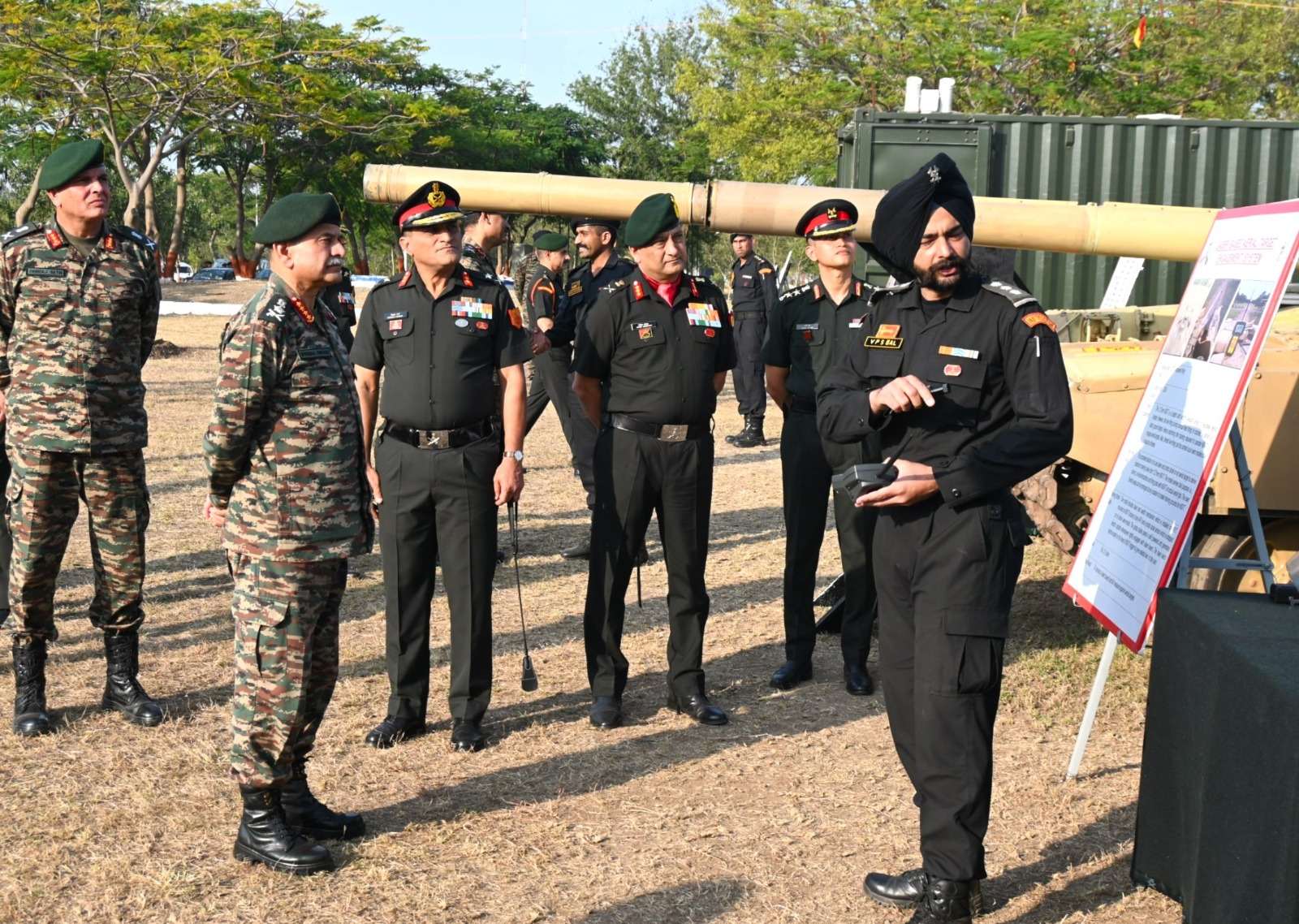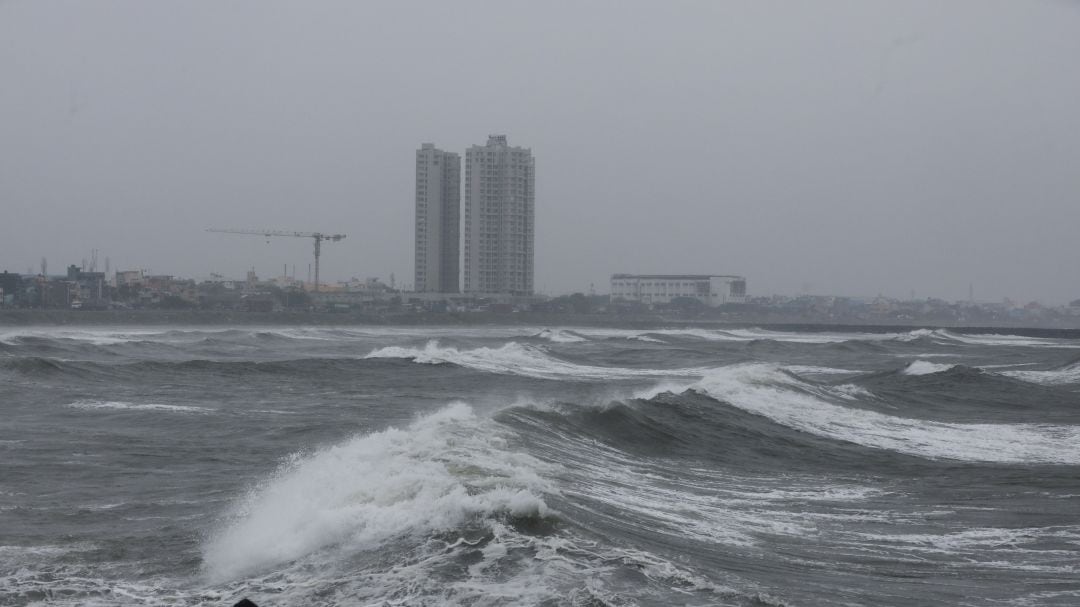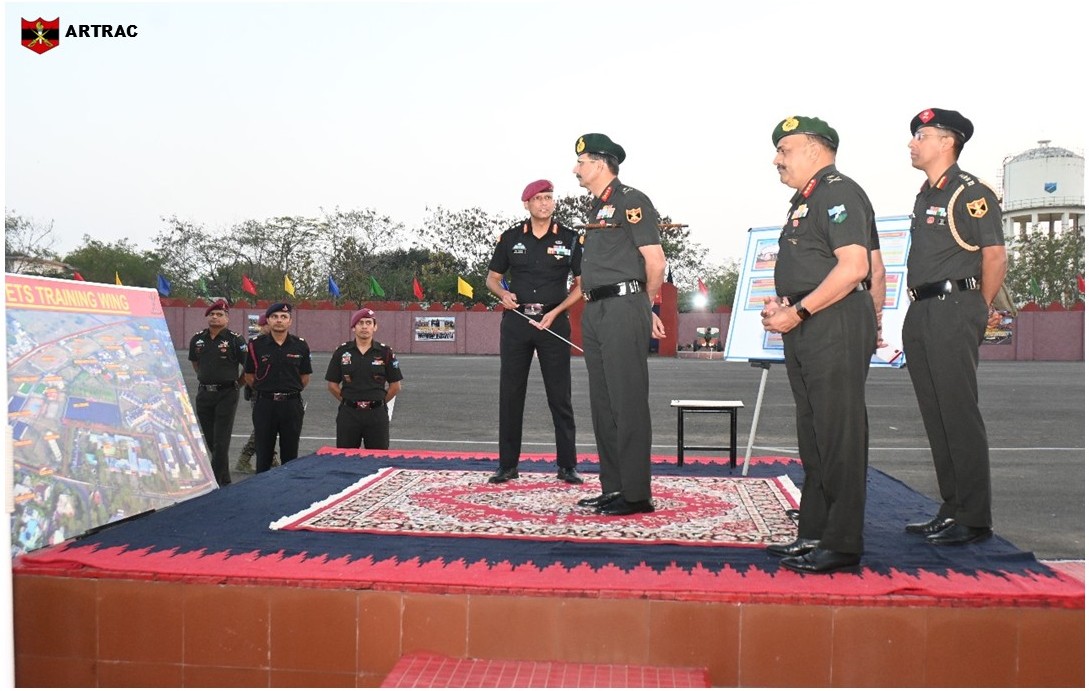General Upendra Dwivedi Addresses Future Leaders at MILIT Pune
General Upendra Dwivedi, Chief of the Army Staff (COAS), delivered an insightful address to the Future Leaders of the Tri-Services…
NDA Commandant Hosts Aircrew Participating in Passing Out Parade Autumn Term 2024
Vice Admiral Gurcharan Singh, Commandant of the National Defence Academy (NDA), hosted the aircrew of various aircraft formations participating in…
Argentinian Defence Attaché Visits High Altitude Warfare School (HAWS) Gulmarg
The Defence Attaché of Argentina, an expert in High Altitude Warfare, visited the prestigious High Altitude Warfare School (HAWS) in…
General Upendra Dwivedi Visits ACC&S and MIC&S, Reviews Training and Modernization Efforts
General Upendra Dwivedi, Chief of Army Staff (COAS), visited the Armoured Corps Centre & School (ACC&S) and the Mechanised Infantry…
Indian Navy Activates Full Disaster Response Plan as Cyclone Fengal Threatens Tamil Nadu
Chennai: The Indian Navy has activated its full disaster response plan as Cyclone Fengal strengthens in the Bay of Bengal,…
Lieutenant General Devendra Sharma Visits MCTE Mhow
Lieutenant General Devendra Sharma, General Officer Commanding-in-Chief (GOC-in-C), Army Training Command (ARTRAC), visited the Military College of Telecommunication Engineering (MCTE)…

